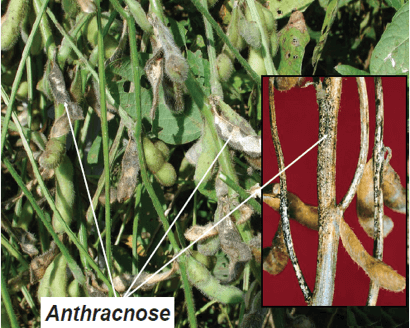Anthracnose is caused by the fungus Colletotrichum truncatum. While anthracnose can develop early in the growing season after long periods of humid, wet weather, it usually appears during reproductive growth stages on stems, pods, and petioles as irregularly shaped, brown-black areas. Within the discolored area small, black acervuli develop that have minute black spines (setae). The acervuli may resemble pod and stem blight, however they are randomly scattered and not arranged in rows.

